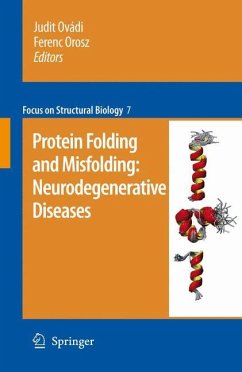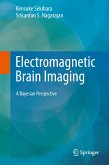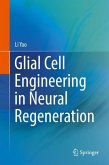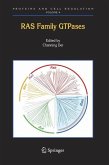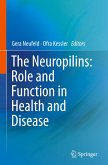The worldwide increasing age of populations brought the neurodegenerative diseases into the focus of interest. A number of the diverse human neurodegenerative diseases are now recognized as conformational diseases frequently caused by aggregations of unfolded or misfolded proteins. Knowledge on the intrinsically unstructured proteins, a new family of gene products as well as on the misfolded proteins produced by genetic mutation or environmental effects has been extensively accumulated in the past years. These proteins frequently cause proteolytic stress and/ or enter into aberrant, non-physiological protein-protein interactions leading to sequestration of protein aggregates which are assemblies of many not-yet-identified components in addition to the deposition of well-characterized misfolded peptides and proteins such as b-amyloid, tau, a-synuclein and polyglutamine containing proteins. These protein assemblies display diverse ultrastructures such aggresomes, fibers, oligomers or amorphous structures, however, the nature of these species concerning their cytoprotective or cytotoxic effects has not been clarified yet.
The main focus of this volume is to review the molecular events initiated by unfolded or misfolded proteins leading to conformational human diseases, with special emphasis on the macromolecular homo- and heteroassociations of the malfolded proteins into characteristic ultrastructures found primarily in Parkinson's and Alzheimer's diseases. This book reviews the structural knowledge accumulated for well-studied and for newly discovered proteins involved in paradigmatic conformational disorders with the aim to broaden our understanding of the pathomechanisms of neurodegeneration, which is crucial for finding effective therapeutic interventions that could prevent or circumvent the development of neurodegenerative disorders in humans.
It was twenty ?ve years ago this year that for the ?rst time a protein under- ing a form of human cerebral amyloidosis, the Icelandic-type hereditary cerebral haemorrhage was identi?ed. This, together with the recognition that an amino acid substitution can transform the wild type cystatin C into a disease-associated amyloid-forming protein in this condition, was only a prelude to a series of imp- tant discoveries that followed. As a result, pathologically altered proteins have been brought into the centre stage of research into the pathomechanism of a n- ber of neurodegenerative diseases, which include epidemiologically such important conditions as Alzheimer s disease or Parkinson s disease and, among others, also the transmissible spongiform encephalopathies, Huntington s chorea, spinocereb- lar ataxias, frontotemporal lobar degenerations and amyotrophic lateral sclerosis. Despite the diversity in the amino acid sequence of the different proteins involved in these neurological diseases, one of the common themes underlying the patho- chanisms of all these conditions is protein misfolding, aggregation hence the term protein folding disorders , which can trigger cascades of events ultimately resulting in synapse loss and neuron death with devastating clinical consequences in many of the most precious spheres of human existence including personality, cognition, memory, skilled movements and affection. It is always a challenging task to unite the different topics of the individual ch- ters into a common theme in a multi-author volume, but the current book edited by Judit Ovadi and Ferenc Orosz ?ts this task admirably.
The main focus of this volume is to review the molecular events initiated by unfolded or misfolded proteins leading to conformational human diseases, with special emphasis on the macromolecular homo- and heteroassociations of the malfolded proteins into characteristic ultrastructures found primarily in Parkinson's and Alzheimer's diseases. This book reviews the structural knowledge accumulated for well-studied and for newly discovered proteins involved in paradigmatic conformational disorders with the aim to broaden our understanding of the pathomechanisms of neurodegeneration, which is crucial for finding effective therapeutic interventions that could prevent or circumvent the development of neurodegenerative disorders in humans.
It was twenty ?ve years ago this year that for the ?rst time a protein under- ing a form of human cerebral amyloidosis, the Icelandic-type hereditary cerebral haemorrhage was identi?ed. This, together with the recognition that an amino acid substitution can transform the wild type cystatin C into a disease-associated amyloid-forming protein in this condition, was only a prelude to a series of imp- tant discoveries that followed. As a result, pathologically altered proteins have been brought into the centre stage of research into the pathomechanism of a n- ber of neurodegenerative diseases, which include epidemiologically such important conditions as Alzheimer s disease or Parkinson s disease and, among others, also the transmissible spongiform encephalopathies, Huntington s chorea, spinocereb- lar ataxias, frontotemporal lobar degenerations and amyotrophic lateral sclerosis. Despite the diversity in the amino acid sequence of the different proteins involved in these neurological diseases, one of the common themes underlying the patho- chanisms of all these conditions is protein misfolding, aggregation hence the term protein folding disorders , which can trigger cascades of events ultimately resulting in synapse loss and neuron death with devastating clinical consequences in many of the most precious spheres of human existence including personality, cognition, memory, skilled movements and affection. It is always a challenging task to unite the different topics of the individual ch- ters into a common theme in a multi-author volume, but the current book edited by Judit Ovadi and Ferenc Orosz ?ts this task admirably.

